I often envy the original gangsters – guys like Brock Yates, for instance. He invented the affectionate term, shitbox. Or – going back even farther – Uncle Tom McCahill. The guys who wrote about cars when cars were different – often profoundly so.
And sometimes really bad.
They had material to work with.
You had to have been there – or at least, been old enough to read what they were writing at a time when what they were writing about still lurked the roads.
It was literature, at times. And sometimes, scary literature.
Try to imagine new cars like the Chevy Vega, as a for-instance. That a major car company would actually have the contempt for sound design – and for its customers – to put on the market a car with an aluminum engine without steel liners. The thing would burn a quart of oil every several hundred miles – within a few thousand miles of leaving the showroom.
There were also brilliant cars like the VW Beetle, which may have had Nazi antecedents, but so what? The air cooled, rear-mounted engine was as simple as a Briggs & Stratton law mower and almost anyone could fix almost anything that went wrong with it. Plus the thing had personality.
Every drive was an adventure. And that adventure was a deep vein of material; there was always something different to write about.
Fast-forward to now – and consider the plight of guys like me, the End Times car journalists whose brutal job is to try to explain what makes Crest different from Colgate on wheels.
The Focus is Ford’s compact sedan and five-door hatchback.
What makes it different? Not much. Which isn’t very bad – or very good. I am casting around for something as I stare at this keyboard… .
Well, there’s this: Ford has announced it will be discontinuing most of its cars – in favor of crossovers and SUVs – so that’s a difference. And that will probably make a difference as far as what you’ll pay for a new Focus vs. rival small sedans like the Honda Civic, Mazda3 and Hyundai Elantra – among others.
Base price is $17,950 – vs. $18,095 for a new Mazda3 and $18,940 for a Honda Civic.
There are some other differences, too – among them the Ford’s unusual (for the class) three cylinder engine – which is actually the optional engine.
Also that it’s available with an automated manual transmission – which is fairly exotic stuff for a car in this price range.
WHAT’S NEW
No major changes for 2018 – because an all-new 2019 Focus is on deck.
At least, for Europe – where people still seem to like sedans. It is very possible that Ford will only offer the hatchback version over here. Because people here seem to not like sedans anymore.
WHAT’S GOOD
Very good gas mileage with optional 1.0 liter engine and six-speed automated manual transmission.
Tremendous front seat legroom (43.1 inches).
Base S trim is well-equipped with the necessaries (AC, a 4.2 inch LCD touchscreen, most power amenities, a tilt and telescoping steering wheel) but without the addled-driver/idiot-proofing “assists” that are becoming standard in so many new cars.
WHAT’S NOT SO GOOD
Newer rivals like the just-redesigned Civic match the mileage of the Ford’s optonal engine with their standard engine.
Tight back seat (33.2 inches of legroom – almost four inches less than the new Civics got).
UNDER THE HOOD
The as-it-comes Focus is powered by a 2.0 liter, 160 hp four cylinder – available with either a five-speed manual transmission (standard) or a six-speed automatic (optionally).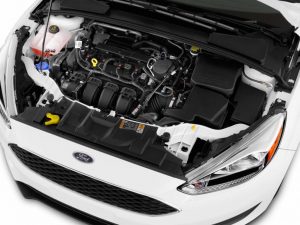
Boilerplate.
Not much difference vs. rivals like the new Civic which comes standard with a 2.0 liter, 158 hp four. Or the Mazda3, which comes standard with a 2.0 liter, 150 hp four. It’s kind of like – for those who remember – the Universal Japanese Motorcycle (UJM) of the ’70s. Whether you had a Honda or a Kawasaki or a Suzuki, you probably had an inline air-cooled four in the 750-900 cc range.
The Ford’s optional engine is a 1.0 liter three cylinder.
It’s smaller than most full-sized motorcycle engines – and has one less cylinder than most of them, too.
It is bucked up – on demand – by a turbo. Hence EcoBoost. The turbo boosts the output of this micro-engine to 123 hp (and 123 ft.-lbs. of torque at 3,500 RPM). It also boosts the Ford’s mileage from 25 city, 34 highway with the 2.0 liter engine to 30 city, 40 highway.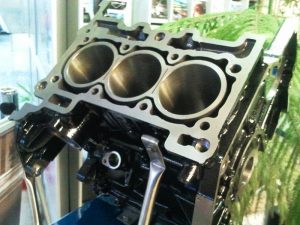
On the downside, the higher-mileage turbocharged three cylinder engine isn’t standard – and isn’t available in the lower-cost S trim version of the Focus sedan.
To get it, you have to buy the higher-trim (and higher cost) SE, which stickers for $19,245.
That makes it more expensive than the new Honda Civic with its standard 2.0 liter engine, which returns sightly better gas mileage: 31 city, 40 highway. The Mazda3’s 2.0 liter engine also nearly matches the Ford’s mileage – 28 city, 37 highway – and undercuts it on price by $1,150 ($18,095 vs. the EcoBoosted Ford’s MSRP of $19,245).
Two years ago, the Focus’ three-cylinder was tops in its class as far as mileage – but the others have caught up – and they don’t charge extra for the MPGs.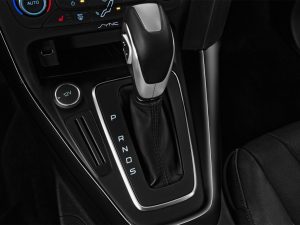
There is also a difference in terms of acceleration.
While the 1.0 liter EcoBoosted Focus with the optional six-speed automated manual is the most fuel-efficient version of the Focus, it’s also noticeably the slowest. This combo takes about 9 seconds to make it to 60. If you shift for yourself – with the six-speed manual (an upgrade over the five-speed manual that’s standard with the 2.0 liter base engine) you can gain back one full second – at the cost of a couple of MPGs.
ON THE ROAD
The crossover SUVs which are driving sedans like the Focus to extinction are more versatile. They have more space, offer more capability – including (usually) available all-wheel-drive. Which for whatever reason is almost unavailable in most non-luxury sedans.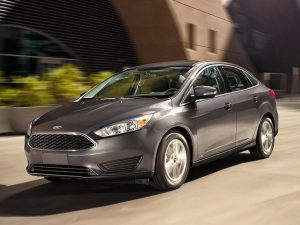
But crossovers are also compromised.
They ride high – which isn’t optimal for high-speed handling. And they’re heavier – which causes them to use more gas; this in turn puts pressure on their manufacturers to get rid of manual transmissions – since an automatic can usually be programmed to squeeze out an extra MPG or two over a manual. Which is a huge big deal given the pressure to comply with the government’s fuel economy fatwas.
Which is why almost all crossovers are automatic-only.
Sedans like the Focus sit lower – so you’ve got a lower center of gravity, which is a natural stability enhancer. They are lighter, so they sill perform decently with smaller engines while also posting good gas mileage numbers. That, in turn, makes it feasible for their manufacturers to continue offering them with manual transmissions.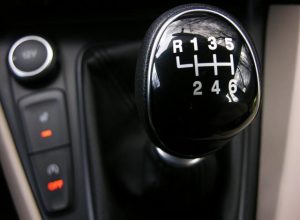
So what you’ve got here – and at Mazda and Honda, too – is a car that may not be as practical as a crossover but is more fun to drive, especially if you drive at a clip above the pace of the herd.
Keep in mind that even the base Focus is two-thirds or more a Focus ST – the high-performance version of the Focus. It hasn’t got the ST’s 252 horsepower engine or the suspension/wheel and tires upgrades.
But the basic car is the same car.
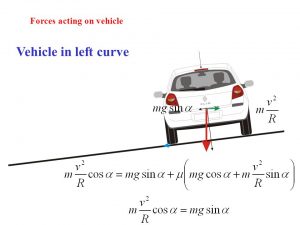
Unlike most crossovers, it corners flat – no uneasy feeling that you’re about to be cornering on two wheels because you entered that curve a little hot. And it’s noticeably more stable if you have to jerk the wheel hard left to avoid a deer that just jumped into the road.
If you lust for the ST but can’t afford the ST – or the insurance – the regular Focus is two-thirds the thrills for less than two-thirds the price.
And there’s another perk. It rides better than the ST – which is brutally stiff (which is probably why it hasn’t sold very well, despite how fun it is to drive… briefly).
The Ford has best-in-class driver/front seat passenger legroom: 43.1 inches. But the backseat only has 33.2 inches of legroom – which is much less than in the new Civic (37.4 inches) and noticeably less than in the Mazda3 (35.8 inches).
But the Focus does have more backseat headroom than most of its rivals: 38 inches vs. 37.2 in the Honda and 37.6 in the Mazda. It doesn’t sound like a big difference on paper, but if you’re six-footer, it can be a difference that makes all the difference.
The sedan – not long for this world – has a 13.2 cubic foot trunk.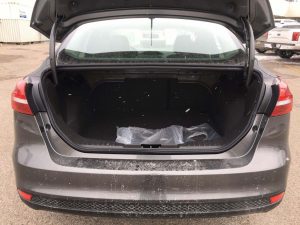
The hatchback version of the Focus has 23.9 cubic feet of space behind its second row and if you fold the second row down, that expands to 43.9 cubic feet.
Which is probably why the hatchback will survive the decimation that’s on deck.
The Ford comes standard with a pretty small (4.2 inch) screen that’s not touch-activated. The Mazda3 comes standard with a 7 inch LCD screen that’s both knob and touch activated.
On the other hand, you can upgrade to an 8-inch touchscreen that’s bigger and (arguably) nicer than the best-you-can-get in the Mazda3 (even top-of-the-range Gran Touring trims get the same 7-inch screen as the base trim).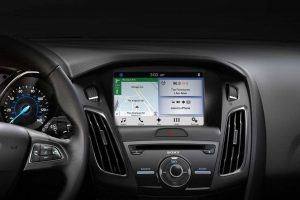
Additionally, Titanium trims get Ford’s unique exterior touchpad entry system, which you’ll appreciate if you ever misplace your key fob. Other niceties include exterior puddle lamps, heated seats and steering wheel – still an unusual feature in this price range.
The Focus also has an emergency brake lever – the kind you pull up to engage the rear brakes manually. This is a genuine emergency brake – as opposed to a parking brake that’s engaged electronically, by pushing a button.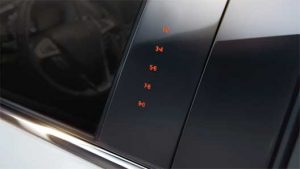
The pull-up emergency brake is something you can actually use to slow the car in a controlled manner if the main brakes ever fail, which you can’t do with the electric-activated button brake. It is impossible t modulate braking pressure manually; it is either On or Off.
More importantly, you can use the pull-up emergency brake lever to have fun with the car – by locking up the rear wheels and simultaneously hard-cranking the steering wheel to perform Secret Service-style 180s.
The base S trim happily lacks almost all of the annoying, peremptory saaaaaaaaaafety “assists” which are practically being force-fed to us by the government and the car companies.
For instance, the Lane Departure Warning and steering “assist.”
The premise is that people can’t be expected to keep their car in its lane, as that might interfere with checking emails or sending texts. So the car “assists” by steering itself back into line when it wanders off onto the shoulder or across the double yellow and into the path of opposing traffic.
But if you’re not checking emails or texting, the car countermanding your steering inputs – as it will do even when it’s your intention to make a lane change but have failed to activate your turn signal (which you might not want to do if there’s no reason to do so, as when there’s no traffic anywhere in the vicinity) is as annoying as a mother-in-law who won’t shut up.
Thankfully, this system is optional.
For now.
But the soon-to-be-here 2019 Focus – which will be arriving at dealerships in a few months – will likely include things like Lane Keep Assist as standard equipment.
You have been hipped.
THE BOTTOM LINE
If you’re among the dwindling few who still like sedans – and don’t like naggy tech – better hurry.
Changes are coming.
. . .
Got a question about cars – or anything else? Click on the “ask Eric” link and send ’em in!
If you like what you’ve found here, please consider supporting EPautos.
We depend on you to keep the wheels turning!
Our donate button is here.
If you prefer not to use PayPal, our mailing address is:
EPautos
721 Hummingbird Lane SE
Copper Hill, VA 24079
PS: EPautos magnets are free to those who send in $20 or more. My latest eBook is also available for your favorite price – free! Click here. If you find it useful, consider contributing a couple of bucks! 


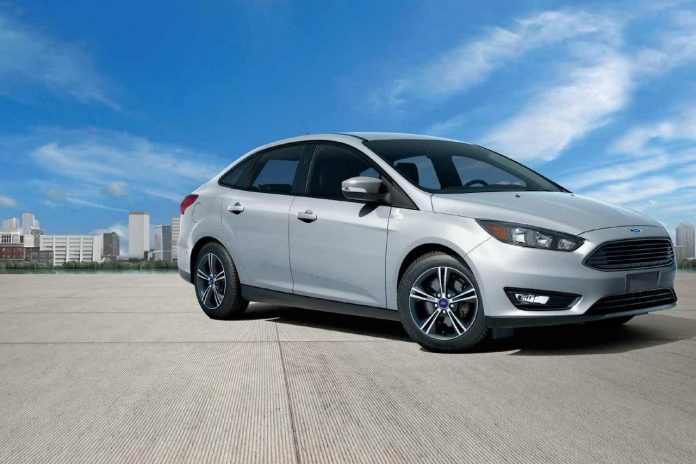


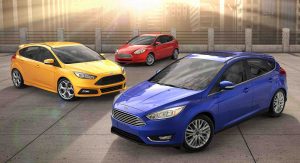
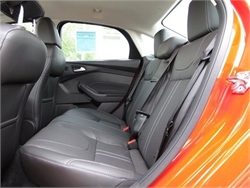
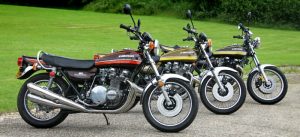
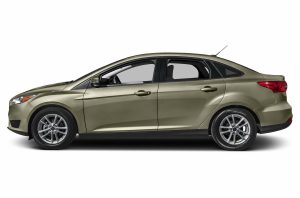
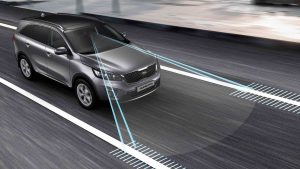
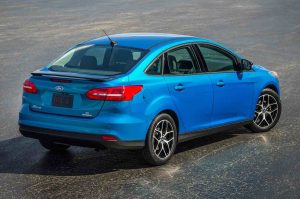







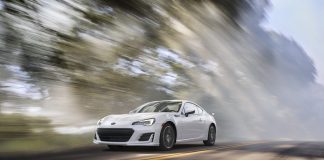
Eric,
Back in November, I bought a very gently used 2015 Ford Focus SE. It’s very similar to the 2018 you reviewed here. I love it! I wanted a car that combined practicality, economy, and fun, and the Focus DELIVERS on all counts. Ford’s Focus is a winner, and I’m disappointed that it’ll be disappearing from its lineup soon. So, I went out and got one while I could.
My Focus has the sport package, so I get the paddle shifters. I can have a conventional automatic in traffic where shifting a manual is a chore, while having the option to choose gears when I’m out on the local back roads having fun. During the winter when I can’t ride, I like being able to take my Focus out and have fun with it.
I think Ford had a winner in the Focus; it’s too bad it’ll soon disappear from its lineup. I heard that they were keeping the Focus name, but the vehicle would be a crossover-ugghh! Because it’ll soon disappear, I made it a point to get one while the gettin’ was good. I’m happy I did!
Of all the automobile reviewers today you are my favorite because you are the most like Yates and McCahill. I read those guys for years (I’m 72) and loved everything they wrote. Yates may have used the word “shit box” first in print but he didn’t invent it. I remember my mother calling an old car that was taking up two parking spaces in an area where she wanted to park a shitbox back in the early 50’s. And she sounded like it was an old and familiar term. Keep up the good work and “illegitimi non carborundum”.
Ken,
Thank you for what is – for me – perhaps the greatest compliment anyone has paid me so far!
And: Your mom sounds like she was my kind of people…
From what I’ve read you’re going to like the 2019 Focus much more.
http://www.autobild.de/artikel/ford-focus-st-2019-erlkoenig-neue-infos-13281565.html
From what I’ve read you’re going to like the 2019 Focus much more.
The 1.0 three cylinder has a normal 6 speed automatic not the Power Shift automated manual.
Less legroom in the back than the previous generations.
All that knowledge gained from converting to FWD and Ford went backward in passenger accommodation.
https://www.ford.com/cars/focus/features/performance/?intcmp=vhp-featcta-performance
Impressive you can even get a ford that it doesn’t have that garbage standard. Even the new Nissan Titan comes standard with nanny bull shit. Mother in law inherited one of these from her late father who drove a buick till he died. It’s a 16′ Focus. Had the recall prone transmission of course. I have little trust for it compared to the imports.
My kid has a ’17 Focus base model, pretty much the same as the ’18 reviewed here. Some unsolicited thoughts from me are: 1) Hard (for me) to see the front of the car, meaning the hood slopes down (or the inside dash is angled up) to where the front edge of the hood is not in view. I am uneasy with this, and it is not the case w/my ’14 Jetta and other kids ’16 Jetta. 2) At 70mph, with the 5-sp manual, it is turning 3000 rpm. My ’14 Jetta turns 2200 at the same road speed. So, this makes the car a little buzzy at highway speeds.
Also, what about engine longevity of those extra rpm’s? The plain fact of more engine rotations cannot be discounted. Never was really aware of this aspect of long term car ownership.
I almost bought a ’14 Focus, and would have, if it weren’t sold out from under me the day I was going over there.
Hi Tom,
Which engine is in your kid’s Focus? I am betting it’s the 1.0 liter EcoBoost… which I would not recommend. The mileage advantage isn’t great and there is the possibility of having to deal with the turbo crapping out at some point. The 2.0 engine is the better choice, and not just because it makes more power!
No: It is the 2.0. I also think it does *not* have direct injection, which is a plus. Overall, from what I have seen in the car, it is pretty solid. With the 3000rpm @ 70 thing, I betcha it is mostly (solely) due to gearing. My jetta turns much less, but has absolutely no guts in trying to pass anyone in 5th gear. A little more roll-on power is in the Focus.
It makes one wonder why the station wagon bodystyle isn’t available here. When the Focus wagon was available in the US from 2000 to 2007, it sold well. I’m sure it would sell well again if they were to offer it here.
Hi Anonymous,
For reasons known only to the emperor, Americans – in general – seem to dislike wagons. Or at least, not enough of them buy them. Which is why so few wagons – even though most manufacturers sell them abundantly in places such as Europe. I don’t get it. One of my favorite current vehicles is the Golf sportwagen.
But then, I am weird…
The “automatic manual”…dual clutch transmission. I’ve got a 2016 Focus and as long as you know this trans is going to feel different than a conventional automatic, and it helps if you know how it works as designed by Getrag, your fine. But I can understand how some folks might think something is astray if they think it’s a plain automatic.
When you tell your car friends there is no torque converter, they look at you funny.
Hi Aljer,
The Ford automated manual is a pretty decent box; better – in my experience – than the BMW automated manual, which shifts quickly but feels… odd sometimes, especially during WOT acceleration from a dead stop.
Ha! I love your line about Crest vs Colgate. So true.
I have a 2018 Focus RS, it’s a different beast from what you reviewed, but the inside of it is the same. I haven’t bought a car in 15 years until now, and I’m amazed at the changes in the quality of cars. My Focus is an economy car with a fancy engine and drivetrain, which is where all the extra price goes to relative to a base focus. This economy car has climate control, heated seats and steering wheel, power everything. The materials are nice, not fancy. The infotainment system has all the modern stuff like Android Auto and CarPlay, and the GPS is good. These are features the luxury cars charge extra for! It’s much nicer than my 20 year old Mercedes was when it was new. Those luxury cars also try to make their various systems “fancy” in some way, and what I love about the Focus is that it doesn’t pretend to be what it’s not, stuff just works without fuss.